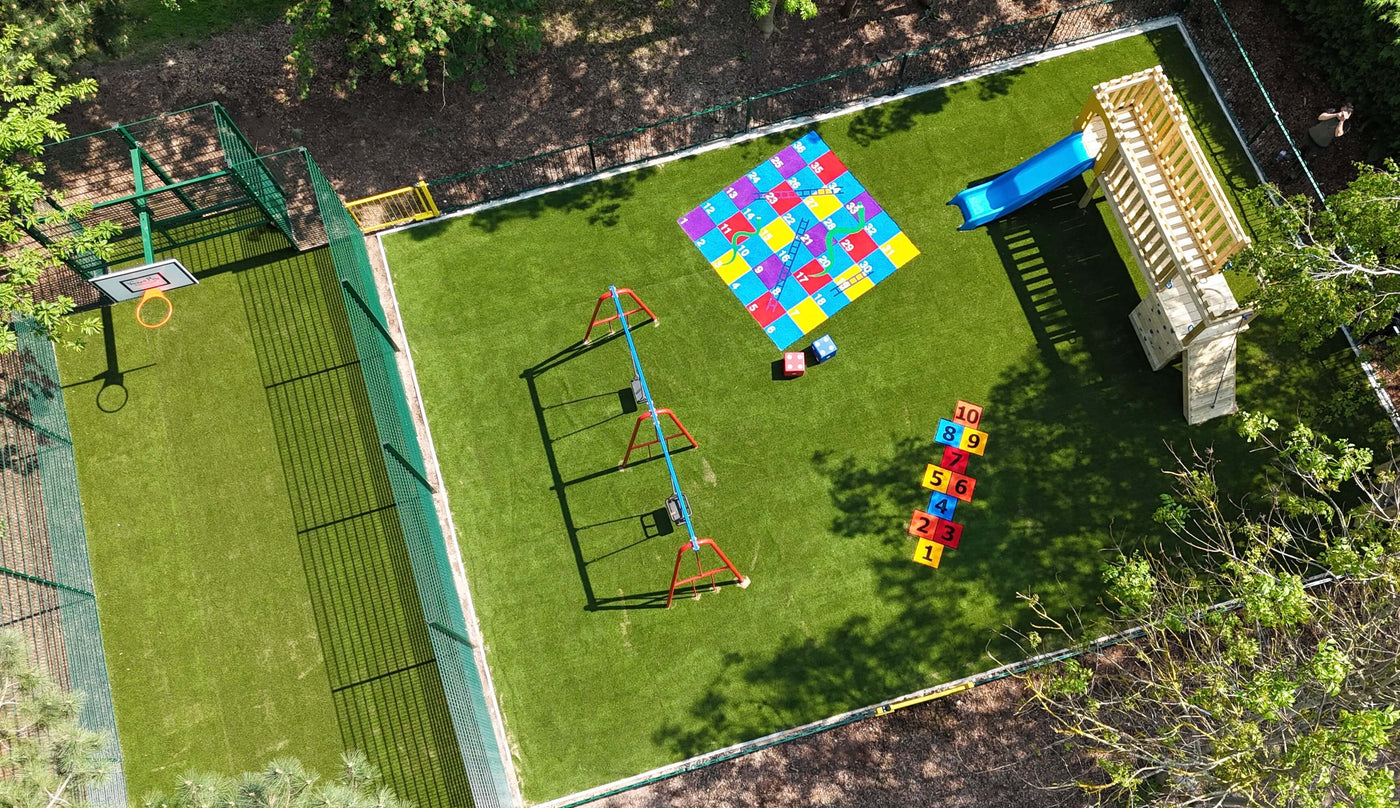The Importance Of Meeting Children’s Developmental Needs
Playgrounds are more than just spaces for children to burn off energy, they are essential environments that contribute to a child's physical, emotional, social, and cognitive development. By carefully designing playgrounds that cater to various developmental needs, schools can provide a foundation for well-rounded growth, from early years all the way to school leavers.
In this blog, we’ll explore how playgrounds can be developed to meet the needs of different age groups, from the youngest in Early Years Foundation Stage, to older children in key stages, ensuring that every child has access to meaningful play that supports their development.
Early Years Foundation Stage (EYFS) and Building Foundations for Growth
In EYFS, children are just beginning to explore the world around them. Play is the primary way children at this stage learn, develop motor skills, and build social connections. A well-designed playground for this age group focuses on sensory exploration, imaginative play, and basic motor development.
Key Features for EYFS Playgrounds:
- Safe, Soft Surfaces: To encourage early mobility and exploration, use soft, impact-absorbing surfaces like rubber mulch or grass mats.
- Sensory Play Areas: Sensory elements such as water features, textured paths, and sound-making devices are great for stimulating young children’s senses and helping them understand the world around them.
- Miniature Play Structures: Low climbing structures and balance beams help children improve physical coordination, strength, and confidence.

By nurturing these early skills in a safe, engaging environment, children develop a sense of independence and problem-solving abilities that will support their growth in later years.
Key Stage 1 and Enhancing Physical Skills and Social Development
As children enter Key Stage 1, ages 5-7. They become more physically active and start to engage with more structured social environments. Playgrounds at this stage need to support both physical development and the social skills that are emerging in the classroom.
Key Features for KS1 Playgrounds:
- Climbing and Agility Equipment: Low climbing frames, monkey bars, and obstacle courses allow children to develop strength, coordination, and balance.
- Interactive Play Zones: Games like hopscotch, obstacle trails, and sandpits encourage teamwork, communication, and cooperative play.
- Seating Areas: Comfortable seating options allow for quiet play or group activities, promoting social interactions and helping children practice negotiating, sharing, and problem-solving with peers.

Creating an environment that combines physical challenge with opportunities for social interaction supports children’s growing independence, builds resilience, and strengthens social bonds.
Key Stage 2 and Supporting Cognitive Growth and Leadership Skills
By the time children reach Key Stage 2, ages 7-11, they are more capable of handling complex tasks and are developing deeper cognitive abilities. Playgrounds for this age group should not only continue to support physical fitness but also foster creativity, leadership, and problem-solving.
Key Features for KS2 Playgrounds:
- Adventure Play Areas: More challenging climbing structures, rope courses, and zip lines encourage children to take risks, test their limits, and build self-confidence.
- Team-Based Games and Sports Zones: Spaces for football, basketball, and other group activities promote teamwork, strategy, and leadership skills, as well as physical health.
- Creative and Imaginative Play: Structures like forts, playhouses, or large open spaces allow children to engage in pretend play, enhancing their creativity and helping them understand different perspectives.

As children develop into more independent thinkers and leaders, playgrounds can provide a valuable space for them to practice leadership, strategise with peers, and engage in imaginative scenarios that fuel their cognitive and social development.
Key Stage 3 and Beyond, Preparing School Leavers for Adulthood
For older students in Key Stage 3, ages 11-14 and Key Stage 4, ages 14-16, the role of the playground evolves from simply a space for recreation to one that can foster relaxation, peer bonding, and mental health. While these students may not engage with traditional playground equipment as often, outdoor spaces still play a vital role in their overall development.
Key Features for KS3 and School Leavers:
- Multi-Use Spaces: Zones for group discussions, sports, or quiet reflection offer students areas to de-stress, socialise, and work together outside the classroom.
- Outdoor Learning Areas: Incorporating outdoor classrooms, gardens, or creative spaces can allow older students to engage with nature while supporting emotional and mental well-being.
- Fitness Zones: Outdoor fitness equipment and sports courts provide students with opportunities for physical activity, which can help reduce stress, promote health, and encourage teamwork.

At this stage, the playground becomes an extension of the classroom, helping older students unwind and continue building skills that will benefit them in adulthood, from leadership to mental resilience.
Benefits of Designing Playgrounds for All Stages
By creating playgrounds that cater to the developmental needs of each key stage, schools foster a healthy, active, and engaging learning environment. These benefits include:
- Physical Development: Playgrounds offer children a space to build strength, agility, and coordination. For younger children, this is essential for motor development, while older children benefit from more challenging play equipment that promotes physical fitness.
- Social Skills: A well-designed playground encourages social interaction, helping children practice communication, teamwork, and conflict resolution in a fun, low-pressure environment.
- Cognitive Growth: Play that encourages problem-solving, critical thinking, and creativity can enhance children’s cognitive abilities, preparing them for challenges in school and beyond.
- Emotional Well-Being: Outdoor play provides opportunities for stress relief, relaxation, and emotional regulation, helping children and adolescents cope with the pressures of school life.
When done right, a well-designed playground can be one of the most powerful assets in a school’s commitment to children’s development.


